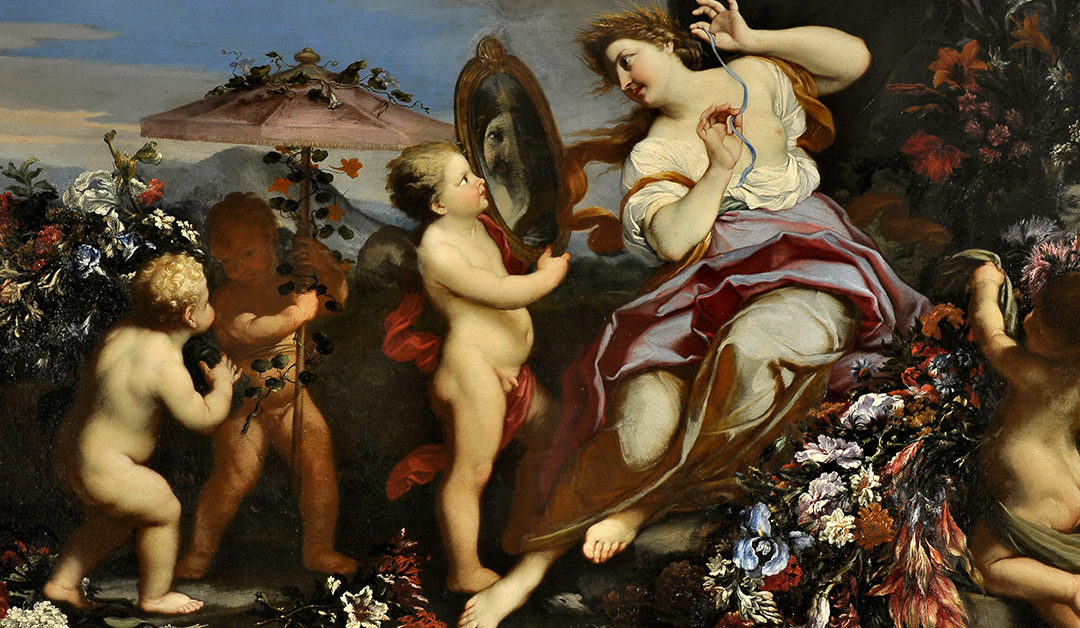The Museum of Fine Arts, St. Petersburg (MFA)
February 12 through May 8, 2022
At the dawn of the seventeenth century, a new generation of artists emerged in Rome that would develop an artistic movement known as the Baroque period. Following the Renaissance, this eccentric new style spread rapidly through Europe and reached to the Americas. Bernini and the Roman Baroque: Masterpieces from Palazzo Chigi in Ariccia explores the genesis of this artistic movement. Through a selection of works from 40 artists, including 10 works by Gian Lorenzo Bernini, this exhibition illuminates Bernini’s influence and explores how it resonated across the Baroque movement.
Carlo Maratti, called “Il Maratta” and Mario Nuzzi, called “Mario de’ Fiori”, The Summer, 1658-59, Oil on canvas, Palazzo Chigi, Ariccia.
At the beginning of the seventeenth century, artists definitively set aside the Caravaggesque model for a more transversal dialogue between the real and the supernatural, the superfluous and the necessary. After the death of the famous Flemish painter Peter Paul Rubens, the debate between “naturalists” and “classicists” (respectively, followers of the styles of Caravaggio and Annibale Carracci) originated a new figurative language, namely the “Baroque,” which found in Gian Lorenzo Bernini its undisputed protagonist. Thanks to the masterpieces conserved in Palazzo Chigi in Ariccia, we can trace the spectacular path by which the “Baroque” became a universal vernacular expression.
Note: images below title
Portrait of Gian Lorenzo Bernini, Baciccio
Medallion with Androcles and the Lion, Gian Lorenzo Bernini
Stop 3: Panoramic View of Ariccia, Giovan Battista Falda
Decorative Ceiling Lamp, Gian Lorenzo Bernini and Alessandro Nelli
Bacchus, or the Allegory of Taste, Pier Francesco Mola
Orpheus and Eurydice, Giuseppe Cesari
Agar and Ishmael, Guillaume Courtois
Lot and his Daughters, Giacinto Brandi
Saint Lucy, Giovanni Battista Salvi
Plague Scene, Mattia Preti
The Suicide of Cleopatra, Domenico Fetti
Portrait of Cardinal Flavio Chigi, Ferdinand Voet
Sanguis Christi, Gian Lorenzo Bernini and Guillaume Courtois
The Flagellation, Pietro Da Cortona
The Jesuit Missionary Roberto de’Nobili in Madras, Jacques Stella
Saint Ivo Distributes Charity, Ciro Ferri
Bernini and the Roman Baroque comprehensively maps the rich spectrum of genres and pictorial styles that characterize Baroque aesthetics. Its many luminous examples of these diverse categories—not only history painting but also alternative genres such as portraiture, self-portraiture and landscaping, as well as preparatory sketches used for large decorative frescoes—epitomize Baroque’s ultimate goal of elevating the viewer in mind and soul, communicating the moral and spiritual messages of the Catholic Church.
















